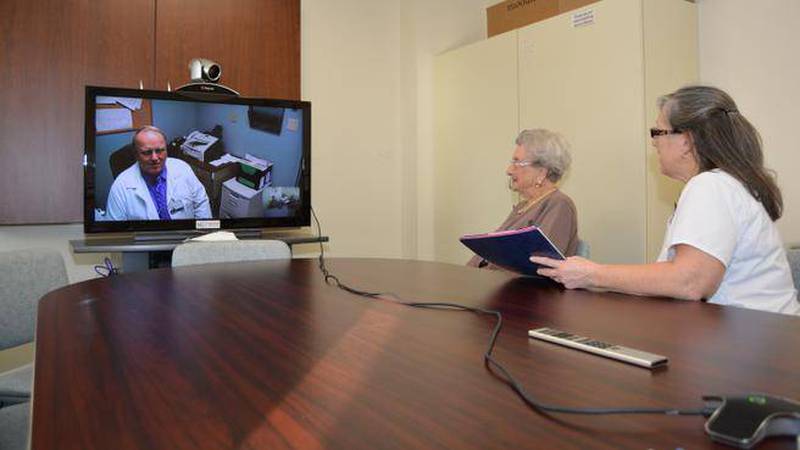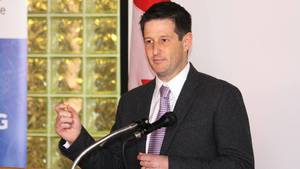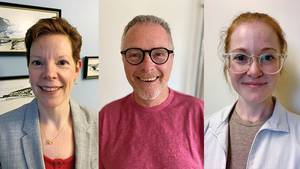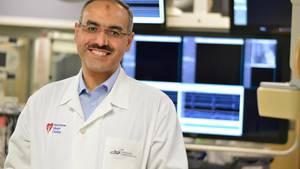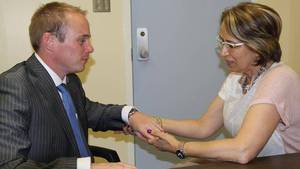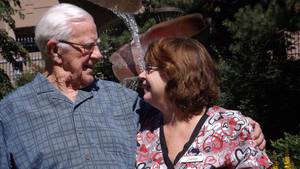
Dr. Hollenhorst in the QEII’s telehealth room, communicates with Frederica and Heather at Yarmouth Regional Hospital. (QEII Foundation)
The QEII Health Sciences Centre is reporting excellent results from a program delivering specialist care across the region via the Nova Scotia Telehealth Network.
Because the region’s major cancer care facility is at the QEII’s Nova Scotia Cancer Centre, many people have to travel a significant distance to get treatment. The telehealth approach lets Nova Scotia patients meet face-to-face with their doctor without leaving their home community.
For Frederica Noah, treatment used to mean a family member would drive her for the six-hour return trip from Yarmouth to Halifax in one day. It’s a hard trip in good weather, and a terrible one in bad weather.
But with the telehealth appointments, the 91-year-old heads to her local hospital and sits with a nurse and family member to talk remotely with her doctor in Halifax via webcam and a television. Both parties sit in private rooms.
“I talked to him and showed him what had to be done on my arm. He wanted to see my leg — he had already gone through the process for that — and he thought it was doing fine,” she says.
She hadn’t used video calling before, but found it easy to adapt to. “There’s nothing to it. It’s just like sitting in his office and chatting with him,” she says. “It’s good for the doctor and it’s good for me.”
Her treatment continues, and she reports that she’s in good health.
Dr. Helmut Hollenhorst, QEII radiation oncologist, and Dr. Nathan Lamond, QEII medical oncologist, say such results show telehealth can replace many in-person visits.
Dr. Lamond says that in the absence of telehealth services, some people even stop attending appointments because the journey to Halifax is too long or they don’t want to ask family members for a drive. Add in the gas and an overnight stay and you have a real barrier to health care.
“It takes the place of a face-to-face interaction very well in the majority of cases,” Dr. Lamond says. “It saves both the physicians and the patients a lot of travel time. For physicians, this allows us to use that time to see more patients.”
The oncologists use telehealth for:
• consultations
• case conferencing
• reviews and reporting test results
• care/treatment planning with patients, families and healthcare professionals
• systemic treatment reviews
• supportive care visits
Physicians control the camera and can zoom in on key areas to assess the patient’s condition.
Dr. Hollenhorst says telehealth requires training on both sides. Patients discuss what they’re comfortable doing remotely and what they want to do in person. Doctors learn how to effectively communicate over the video connection.
“We surveyed about 140 patients to identify any issues or needs that were not met. But it turned out that over 98 per cent of patients were satisfied or very satisfied with the care received,” he says.
For now, the cancer centre’s telehealth program focuses on patients in the Yarmouth area, but could one day expand to other areas, bringing the best possible care to patients wherever they are.

